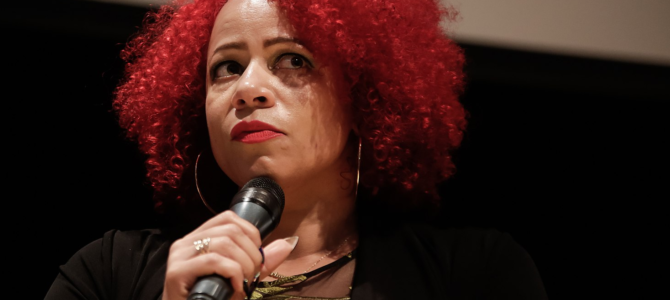Nikole Hannah-Jones, staff writer at The New York Times and lead essayist in The New York Times Magazine’s 1619 Project, just endorsed the nationwide destruction of statues as a product of her historically inaccurate work.
The 1619 Project debuted in 2019 on the 400th anniversary of the arrival of African-Americans in the United States as slaves, as an ongoing look into the history of U.S. slavery.
Although the project has been taught in schools and applauded by elites, even winning Hannah-Jones a Pulitzer Prize this May despite having to issue major corrections, the project’s influence truly revealed itself in the recent removal of historical symbols in nearly every major city across the U.S.
Claremont’s Charles Kesler wrote a column in The New York Post Friday, titled “Call them the 1619 riots,” blaming the indignation and utter lack of regard for the nation’s greatest men on the misinformation stemming from The 1619 Project.
Hannah-Jones responded to the article on twitter saying she would be honored to claim responsibility for the defamation of American heroes and Founding Fathers such as George Washington.
https://twitter.com/nhannahjones/status/1274351225492967424?s=19
“America is burning,” Kesler writes. “Rioters set fire to police stations and restaurants. Looters have ravaged shops from coast to coast. And now they’re coming for the statues — not just of Confederate generals, but the republic’s Founders, including George Washington, whose statue was torn down in Portland, Ore. Call them the 1619 riots.”
The essence of Hannah-Jones’ project, as argued by her editor, Jake Silverstein, is that the emergence of slavery in this country isn’t merely a stain on an otherwise honorable U.S. founding, but rather that slavery is the entirety of the founding. Slavery came before the American Revolution and therefore preceded any ideas of liberty and equality.
“In other words, 1619 is not ‘as important’ as 1776; it is far more important and more revealing,” Kesler wrote. “American slavery is the deeper truth of American freedom. It doesn’t get more systemic than racism being in ‘the very DNA of this country,’ as Hannah-Jones claims.”
Prominent American historians fiercely denounced the project after its initial release for its glaring inaccuracies. Even “impeccable liberals” voiced their objections, Kesler wrote, including Sean Wilentz, Gordon Wood and James McPherson. Five historians even wrote a letter to The New York Times outlining its errors.
Seventh months after its publication, the Times printed a correction for what they admitted was a significant mistake in one of Hannah-Jones’ essays. After being taught in schools for over half a year, the essay was then clarified to show that maintaining slavery wasn’t every colonist’s motivation to forge the American Revolution, but merely that of some.
The project’s scope, however, had already reached young Americans. As evidenced by the mayhem of recent weeks, so many Americans were taught an altered form of history, one riddled with mistruths that discounted the value of the Founders’ work.
Kesler’s article accusing The 1619 Project of inciting this type of defamation with its wrong portrayal of American history divulges truth to those who already saw the project’s inherent dishonesty. Hannah-Jones’ proud ownership of the accusation, however, is far more telling of her own motivation for the project.









